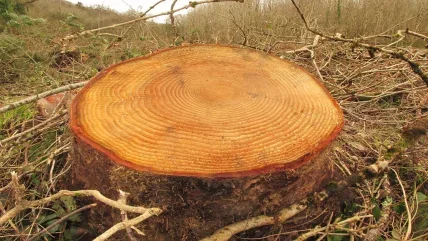
The 2023 International Softwood Conference (ISC), held in Vienna, saw the event’s largest ever attendance, with well over 300 delegates.
The huge turnout probably summarises where the global softwood industry is: searching the market for positive trends. Current global demand is depressed and the industry is looking for glimmers of light; they reluctantly accept that short term there’s not going to be any rapid uplift.
While the general mood of the sector is gloomy, there was the ISC’s usual high level of information from an excellent set of speakers. The event was jointly organised by the European Organisation of Sawmill Industries and the European Timber Trade Federation, with Austria’s FVHI trade association as national hosts, and delegates came from around the world. The Middle East was represented, with a large Saudi Arabian turnout, as were India and Nepal.
Topics covered included raw material availability, market outlook, production trends, country and regional reporting, innovation, and the forthcoming EU Deforestation Regulation (EUDR) developments. The US, Canada, China, Japan, Middle East/North Africa (MENA) and Europe had particularly close scrutiny.
This shows one vast area of softwood capacity that has been omitted: Russia and Belarus.
There are significant volumes of softwood moving into China from Russia, but western trade embargoes are working. Some Russian softwood may be entering embargoed areas, but in overall terms direct shipments have completely ended.
Historically Russian and Belarusian material comprised around 10% of European consumption, but as demand is so suppressed its absence is currently not being noticed.
Amongst all the data and information supplied, some particular points stood out; in overall terms the global new build market is the main area of concern. China clearly has a severe over-production problem, with official data showing approximately seven million empty properties – and there are reports that the true figure runs into hundreds of millions. This indicates that what was once seen as a one way street is now a cul de sac!
North America has often been a strong escape route for European production, but in the current market it does not look as if it’s going to provide any mediumterm solution and that will affect prices. The signals seem to indicate that further price falls over the winter and possibly into the early part of the second quarter of 2024 are likely.
The ISC also recognised the global impact of the forthcoming EUDR. With under two years to go before full implementation, it is now coming into sharp focus and in the current market, where companies are having to make harsh financial decisions, the anticipated cost burden is causing alarm within the softwood sector. It adds complexity and will potentially slow the ability of European companies to respond to demand compared to counterparts in competing nations.
But a Schweighofer prize event recognising youth engagement in the sector underlined that there is cause for optimism in the sector, as did a field trip for delegates to Mayr Melnhof’s new CLT plant.
The €180m facility near Leoben features latest technology and its efficiency, alongside huge capacity, will make for a very significant player in the market.





